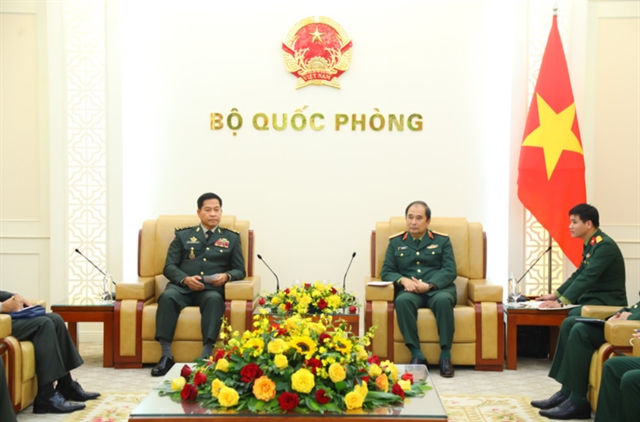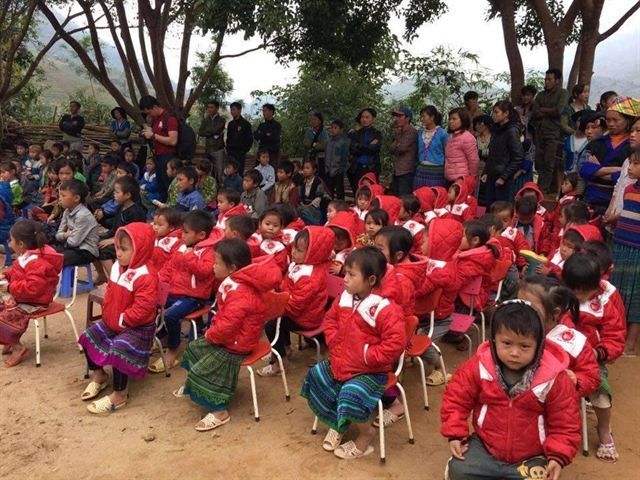 Features
Features
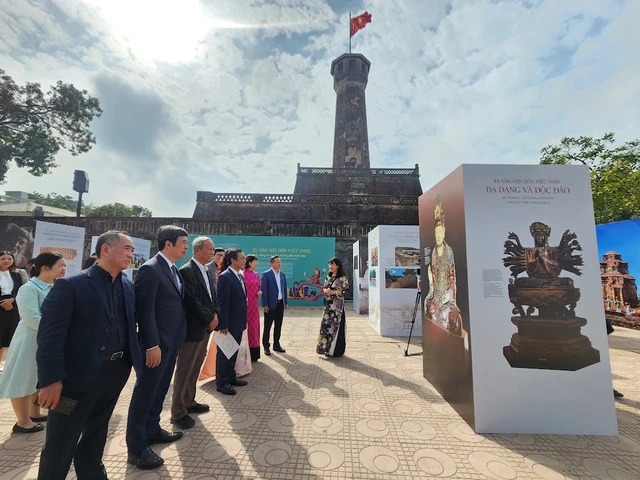
Thanakha powder is ground from the roots and barks of thanakha trees with a flat, round stone mortar. The tree is grown across the country, and visitors will frequently spot men and women on streets in the countryside sitting next to piles of yellow tree trunks grinding the bark.
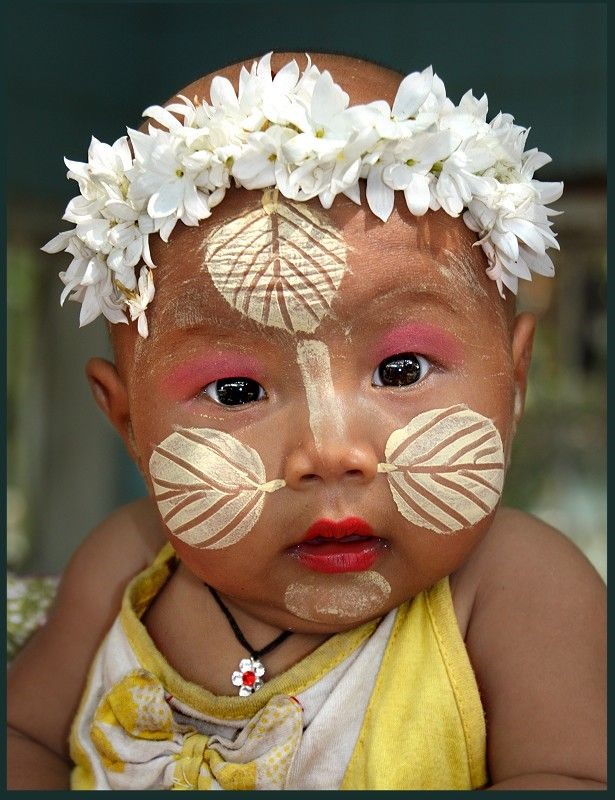 |
| A child’s face painted with thanakha. – Photo pinterest.com |
Khánh Dương
Every day, before stepping out in the scorching sun, Ei Lay, a street food vendor in Yangon, Myanmar, dabs a yellow-white pasty powder on her face. Like many women from the Southeast Asian nation, it’s a habit for Ei Lay to apply thanakha in circular patches on her cheeks, nose, forehead, neck, and any other exposed party of the body.
The thanakha powder protects Ei Lay’s skin from Myanmar’s harsh tropical sun, which beats down almost throughout the year. She is under the sun from early morning until late evening and sweats a lot, but her complexion is untouched by sunburn, and beautifully unaffected. In the countryside especially, Burmese women working in paddy fields wear a thick layer of thanakha.
While Ei Lay applies simple, circular patches, many others are more creative, drawing sophisticated patterns such as leaves and flowers, especially on children’s faces.
This was one of the things that fascinated me when I visited Myanmar. The other national habit that mesmerised me was also related to colour - it was the red mouths of local men who are constantly chewing betel nut.
But be it a corner of Yangon, the country’s largest city, or Bagan, an ancient city with thousands of temples, it is reminiscent of Việt Nam as it was 15 to 20 years ago.
It was intriguing to see people walking around with white faces; women, children and even men wearing a pasty powder that gave them a clownish appearance. But I was in Myanmar at the hottest time of the year, when the temperature could soar up to 37 degrees Celsius, so after days of lathering on intensive sunscreen, I finally put down my Korean-branded sunblock tubes and tried thanakha.
“We use thanakha as a cosmetic. And it clears blemishes such as pimples, acnes, blackheads, itchy spots and rashes,” Ei Lay said, adding that it is also believed to accelerate the production of collagen and elastin and prevent wrinkles, dryness and ageing.
The powder has been used by locals since the 14th century.
Thanakha powder is ground from the roots and barks of thanakha trees with a flat, round stone mortar. The tree is grown across the country, and visitors will frequently spot men and women on streets in the countryside sitting next to piles of yellow tree trunks grinding the bark.
The powder extracted from the wood smells refreshing enough for me to fall in love with it. It is mixed with water to create a milky paste, which is then applied.
For those who prefer to make the paste themselves, small pieces of thanakha bark are easily available and are inexpensive. As a foreign tourist, I bought a 20-cm-long piece for 3,000 kyats (around US$2.2) from a local market in Bagan.
20940205PM.jpg) |
| A souvenir seller in Bagan wearing thanakha. – VNS Photo Khánh Dương |
“Because it originates from nature, it never causes an allergy and has no side effects,” Ei Lay said.
It’s natural, chemical-free, cheap, and effective. No wonder that it remains popular even after so many centuries.
Curious to know how the powder tastes, I tried it and found it was quite bitter. However, locals assured me that there’s no risk if I swallow any of it, as thanakha is also widely used in herbal medicine. After grinding the wood for powder, the leftover pieces are pulverised and made into another powder, which is mixed with water and dried in cakes. This is ground again and applied on the lower limbs, and even the whole body, for relaxation.
The spiritual significance
Myanmar is a Buddhist country and has religious festivals all year long. Thanakha, which means both “cosmetic for beauty” and “cleansing” in Burmese, signifies the essence of purity and carries a spiritual significance, and so is a part of festivals and ceremonies.
In Sittwe, the capital of Rakhin State, there is a thanakha grinding festival, during which in the early part of the night, young women grind thanakha barks and roots with a sprinkle of water in rounded stone mortars, while young men play musical instruments, sing and dance.
Tourists visiting Myanmar during the Thingyan traditional water festival are often taken aback when they see hundreds of people flocking the streets with towels soaked in thanakha powder to wash the face of the Buddha statue. The face of bronze Buddha statues in pagodas and temples across the country are washed every dawn with a watery thanakha solution during festivals. The belief is that it chases away evil spirits and bad luck, and brings happiness, prosperity and progress. - VNS
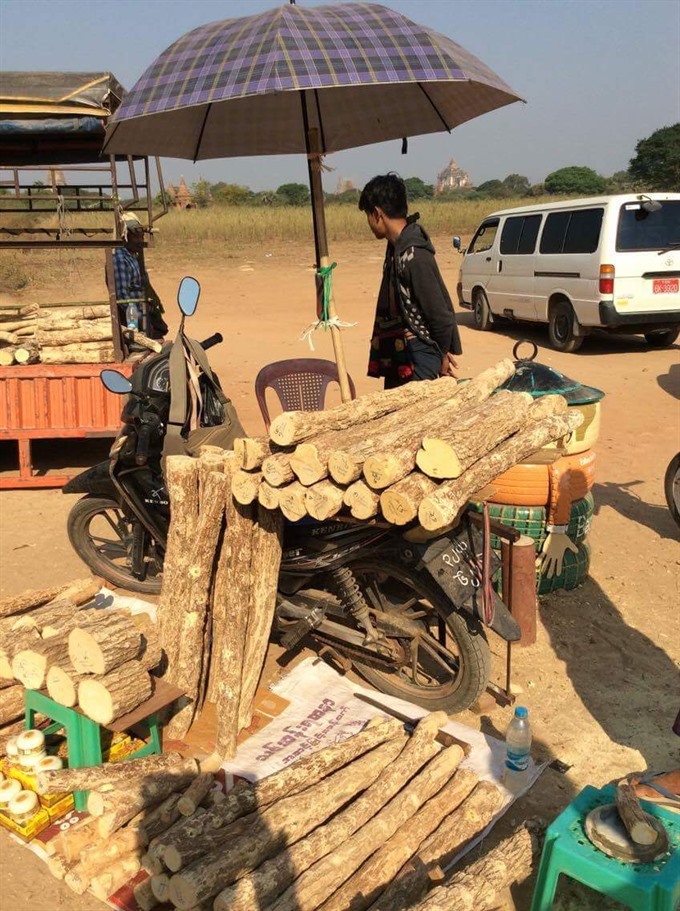 |
| Piles of thanakha bark being sold outside the Ananda temple in Bagan, Myanmar. – VNS Photo Khánh Dương |

